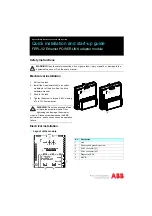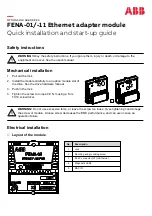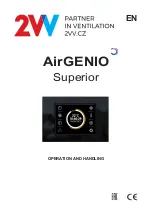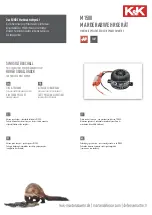
STEP 1
Pre-set pilots as noted:
Pressure Sustaining
– Turn Sustaining Control adjustment screw OUT, counterclockwise, backing pressure off the spring, to allow it to
stay open while adjusting the other controls.
Pressure Reducing
– Adjust OUT, counterclockwise, backing pressure off the spring, preventing possible over-pressuring of the system.
Opening and Closing Speed
- Turn the adjustment screws on the Closing Speed and Opening Speed Controls, if the main valve is so
equipped, OUT, counterclockwise, 11/2 to 21/2 turns from full closed position.
STEP 2
To ensure proper operation, any trapped air will need to be bled off
the valve cover during startup. If your ACV includes a bleed valve,
use a flat head screwdriver to slowly open the valve.
If your valve does not include a bleed valve, bleed air by loosening
a fitting on the valve or a plug, at the highest point of the valve
assembly
(See Figure 1)
.
Step 3
Pressure the line, opening the upstream isolation valve slowly. Air
is vented through the loosened fitting. Tighten the fitting when
liquid begins to vent
(See Figure 1)
.
Counterclockwise to OPEN
bleed valve
Globe
Angle
Size (in)
1
1/4
1
1/2
2
21/2
3
4
6
8
10
12
14
16
20
24
A (in)
16
16
20
22
22
24
32
34
38
44
48
52
56
56
B (in)
10
10
12
14
14
16
24
26
28
30
34
40
48
48
Size (in)
1
1/4
1
1/2
2
2
1/2
3
4
6
8
10
12
14
16
C (in)
16
16
20
22
22
24
32
34
38
44
48
52
D (in)
10
10
12
14
14
16
24
26
28
30
34
40
Setting the Pressure Reducing Control
The following tables detail the recommended minimum valve servicing dimensions.
A
B
C
FLOW
FLOW
FLOW
D
FLOW
Valve Servicing Dimensions
Figure 1
Position Indicator
IOM-ACV-115-11_6115-11 2115
EDP# 1917031
© 2021 Watts 3






























